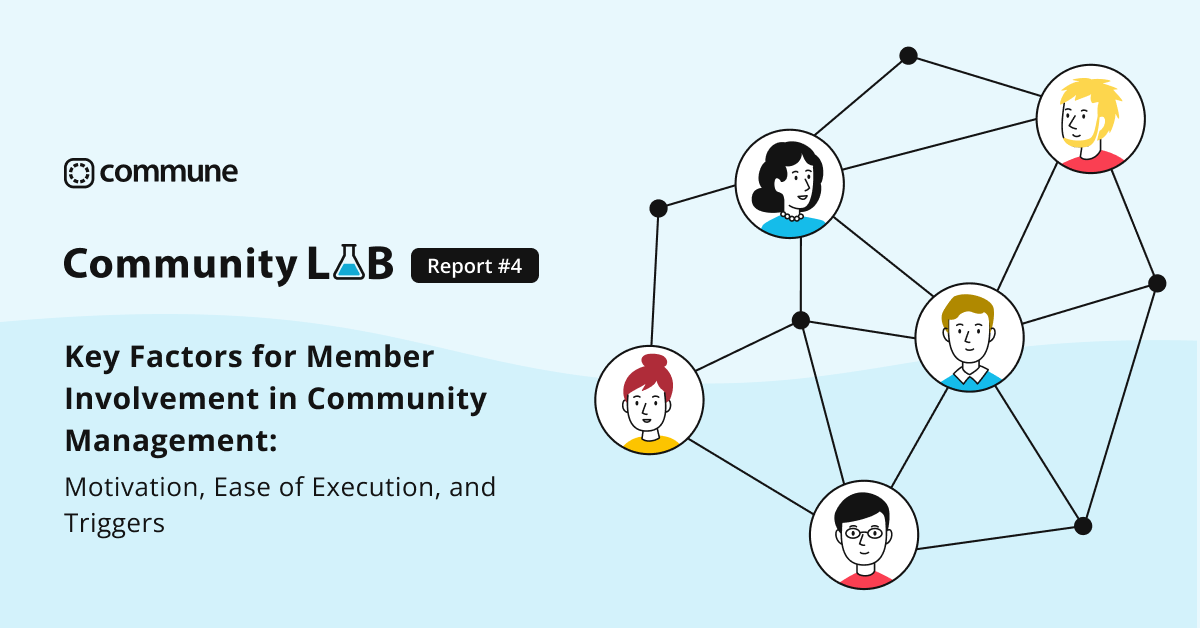
In the previous study, it was proposed that to create situations where community members’ motivation is heightened, it is important to fulfill 3 psychological needs: autonomy, competence, and relatedness.
Building on this, let’s further explore the conditions under which highly motivated members actively engage in community management.
In communities, supporters play a crucial role in reducing the burden on admins, boosting overall member motivation, and bridging the gap between admins and members. Analysis using the Fogg Behavior Model (B = M × A × T) reveals 3 essential elements for the emergence of supporters: Motivation (M), Ability (A), and Trigger (T).
By nurturing motivation in daily operations, preparing behind the scenes for ease of execution, and providing triggers at appropriate times, community management that facilitates the emergence of supporters can be realized.
Let’s call members who actively engage in community management “supporters” here.
Supporters plan events, propose improvements to the community, and assist in community management. These members may engage in volunteer or freelance work, but they usually demonstrate high motivation.
Communities with supporters not only ease the burden on admins but also serve as examples for other members, boosting overall motivation. They act as hubs for communication and understanding the needs of community members, which is extremely valuable to admins as bridges between members and admins.
Supporters are indispensable for co-creating and operating communities in collaboration with community members and admins. What makes such supporters emerge? While motivation is surely a crucial factor, what are the other elements?

To analyze the emergence of supporters, we’ll utilize the Fogg Behavior Model, a simple model proposed by B.J. Fogg from Stanford University. While I find the term “consumer” somewhat one-dimensional and not particularly fond of it, I’ll use it as is for clarity.
The Fogg Behavior Model breaks down consumer actions such as purchases or subscriptions into three components, expressed in the following formula:
B = M × A × T
*Here, we’ll adopt the term “Trigger” for T, although Fogg uses the term “Prompt.”
In essence, for a “behavior” to occur, there needs to be a convergence of high “motivation” and high “ability”, along with a “trigger”.
Let’s apply this model to the behavior of weighing oneself daily for dieting. Suppose the motivation is the desire to monitor progress in weight loss. While stepping on a scale itself isn’t difficult, if the scale’s battery is dead or it’s stored away in a cupboard, the ability to perform the action becomes low. Therefore, it’s crucial to carefully eliminate such barriers.
However, even when “motivation” and “ability” are in place, it’s clear from the model that without a “trigger,” the action of stepping on the scale won’t occur. This forgetting to step on the scale is something that actually happens to me every day…
Conversely, a boiling kettle has a clear “trigger” in the form of a “whistle” sound, making it easy to stop.
So, I’ve realized that I can’t step on the scale due to the lack of “T: Trigger.” There’s also the possibility that “M: Motivation” is initially low.

I attempted to graph the data to make it more understandable, but with 4 variables, it ended up being a four-dimensional graph, making it impractical for presentation here. So, I simplified it into a two-dimensional representation.
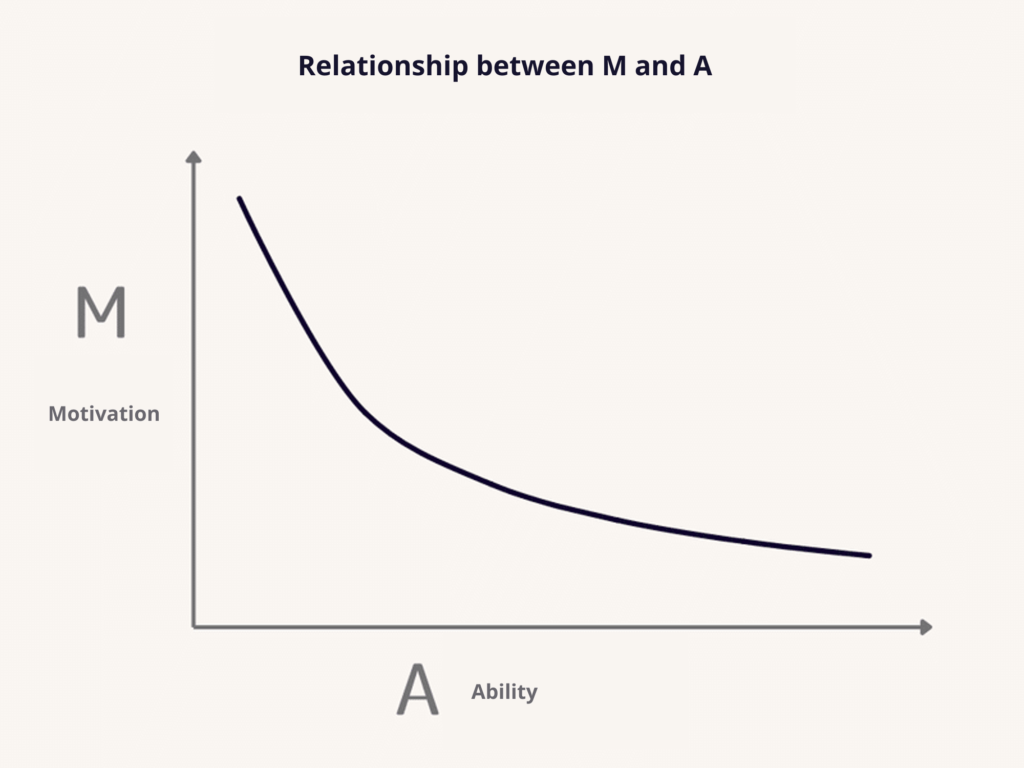
In the following graph, when “motivation” is high, even if “ability” is somewhat low, the multiplication of these factors still results in a decent value. Conversely, even if “motivation” is low, a high “ability” compensates somewhat. This is illustrated in the graph.
Now, let’s consider adding “behavior” to the representation. Assuming that action occurs when the product of “motivation” and “ability” exceeds a certain value, the graph can be represented as follows.
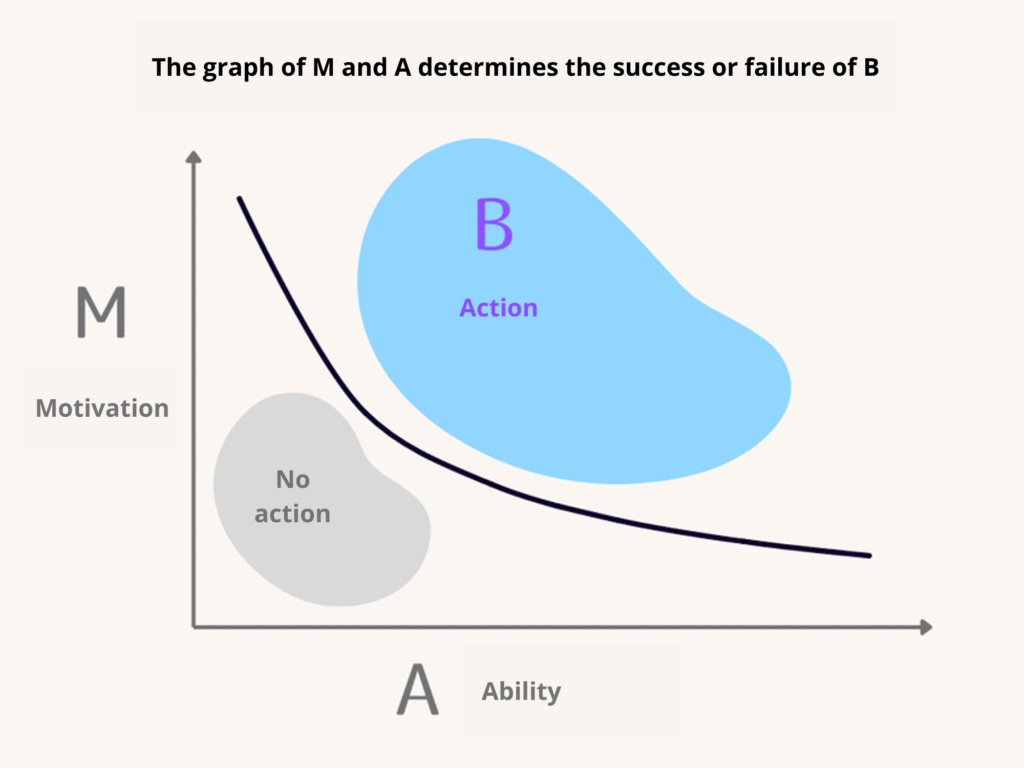
Furthermore, let’s incorporate “trigger” into the picture. If the “trigger” exists, actions that wouldn’t happen with only “motivation” and “ability” are induced. In this case, the graph can be represented as follows.
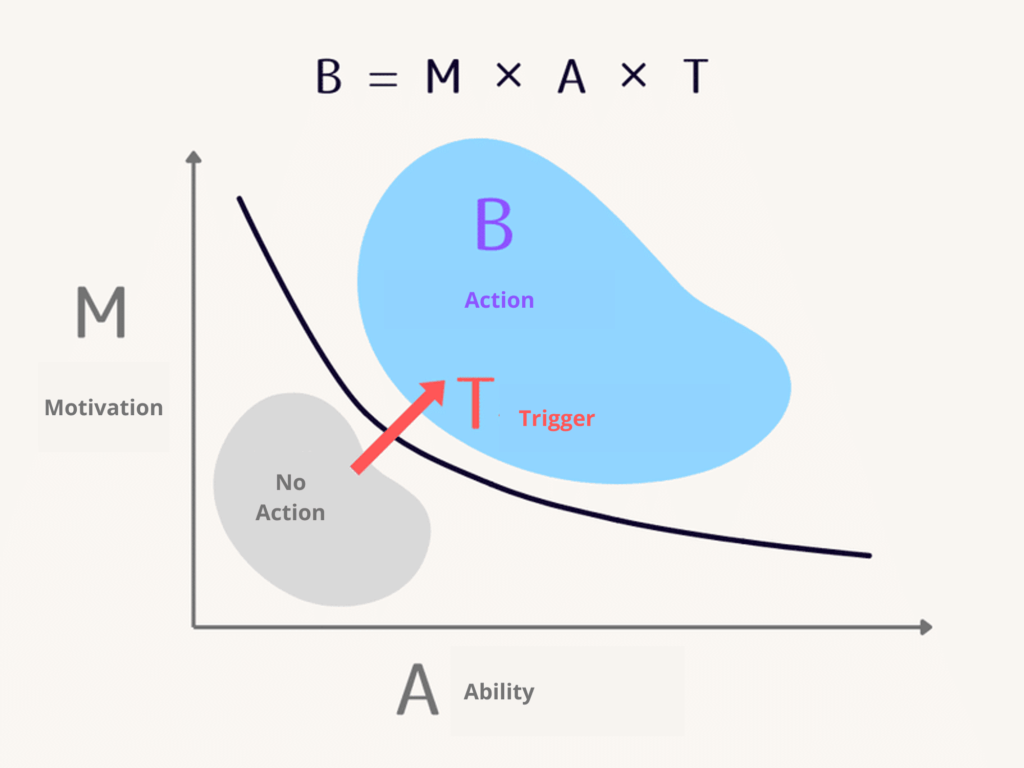
In this way, we’ve visually represented Foggs’ Behavior Model, which suggests “B = M × A × T.”
While prioritizing clarity over strict accuracy, this graph illustrates how “motivation” and “ability” overlapping with “trigger” can lead to action. This visualization might make it easier to understand the relationships between these factors.
Now that we’ve illustrated “B = M × A × T,” let’s investigate a specific analysis. Analysis requires a question. This discussion asks, “How can members support community management?” We’ll use the Fogg Behavior Model as a framework to concretely consider the conditions under which supporters emerge.
In the previous research, we have gained some insights into motivation. From those insights, we learned that to enhance motivation, it’s necessary to satisfy the following 3 psychological needs:
In previous interviews with members who became supporters, we often heard the phrase “empathy for the community’s vision and culture.” The vision and culture likely have effects that enhance autonomy and foster a sense of relatedness, paving the way for increased motivation to become supporters. Similarly, the phrase “feeling like this community is my place” was frequently mentioned. This suggests that deepening relationships within the community and feeling capable of fulfilling some role contribute to motivation.
In addition to increasing motivation, it’s important to avoid actions that could decrease motivation. For instance, if someone posts without a response from community members or admins, their sense of competence and relatedness may diminish. Similarly, critical comments can undermine feelings of competence and relatedness, so it’s important to be mindful of them.
Generally, ability increases when certain criteria are met, such as “takes little time,” “requires little money,” “requires little effort,” “does not require high ability,” “is easy to understand,” “is ethical,” or “is a daily activity.”
When brainstorming specific ideas to enhance ability, the question “How can we make ◯◯ easier?” can be helpful.
Let’s consider the question “How can we make it easier for members to organize events?” Here are some potential ideas:
However, it’s important to note that excessive intervention to increase ability may undermine motivation when someone’s motivation is high. While preparing the cards for ability, it’s essential to adjust the level of involvement based on each member’s motivation level.
Increasing the number of triggers indiscriminately can result in noise, ultimately diminishing their effectiveness. Therefore, the approach of “shooting blindly in hopes of hitting something” is not recommended.
Therefore, it’s best to either focus triggers on special occasions or integrate them naturally into day-to-day operations. For example, the following initiatives could serve as triggers:
In summary, triggers could manifest through various touchpoints such as posts, consultations, surveys, subgroups, and events. While marketing often employs tactics like limited-time or limited-quantity offers as triggers, they may not be as effective within a community context.
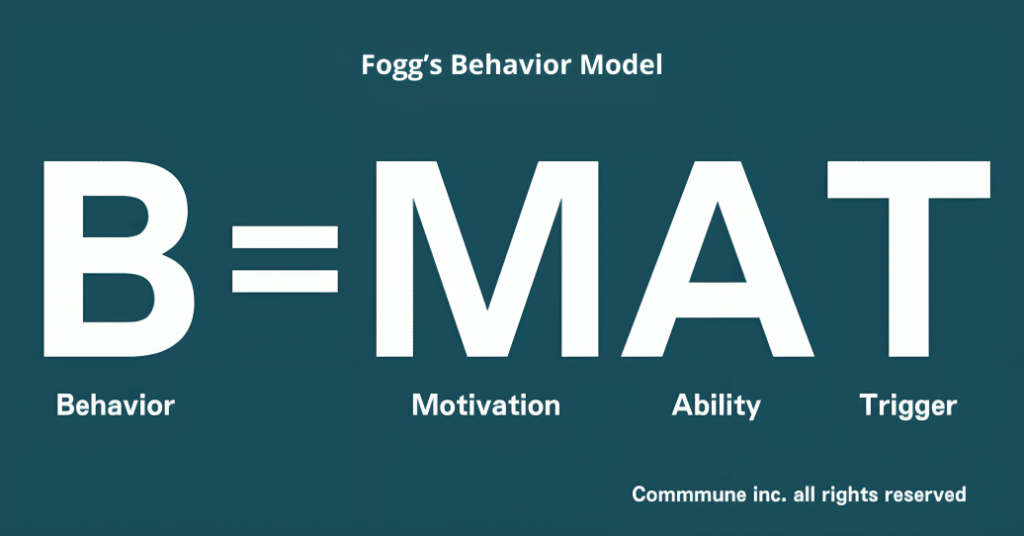
I’ve been thinking about the conditions under which supporters who help run the community emerge. Since some tips could be incorporated into daily operations, I hope you can make good use of them.
Moreover, using the model “B = M × A × T,” you should be able to devise new strategies. It might be fun to organize workshops where community managers brainstorm ideas together!
When considering the timeline, it’s important to note that community members’ “motivation” doesn’t increase immediately, so it seems necessary to cultivate it gradually through daily community management. In contrast, “triggers” can yield certain results even with one-time measures.
So, in daily operations, it would be ideal to continuously fulfill the 3 psychological needs of autonomy, competence, and relatedness to enhance “motivation,” while also consistently improving “ability” by providing information and establishing systems behind the scenes. Then, opportunities for becoming supporters are provided as “triggers” at appropriate times.
By balancing long-term perspectives with short-term considerations, it seems that community management can foster the emergence of supporters. I hope this study can be a useful reference for your community management!
For those seeking to enhance their community managment processes, Commune’s strategic consulting service has successfully supported over 300 communities, from startups to established enterprises, in launching and managing their community initiatives. To learn more about how we can collaborate to enrich your community experience, book a demo today.